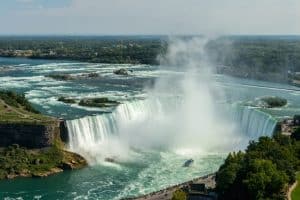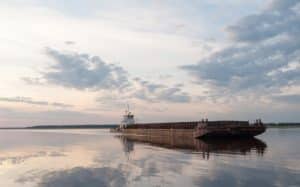 For many people, Niagara Falls is at the top of their must-see lists. They’ve seen pictures and videos of the falls and felt themselves amazed at the power and wonder inspired by the rushing waters. If you’re planning a trip to Niagara Falls, you might even have started reading about the bevy of attractions and activities available in the area. However, you still might not know all that much about the city and falls. You know that Niagara Falls is unbelievably fun and beautiful, but can you believe any of these other astounding facts about the falls and surrounding region?
For many people, Niagara Falls is at the top of their must-see lists. They’ve seen pictures and videos of the falls and felt themselves amazed at the power and wonder inspired by the rushing waters. If you’re planning a trip to Niagara Falls, you might even have started reading about the bevy of attractions and activities available in the area. However, you still might not know all that much about the city and falls. You know that Niagara Falls is unbelievably fun and beautiful, but can you believe any of these other astounding facts about the falls and surrounding region?
Niagara Falls Is Actually Made up of 3 Different Waterfalls
The most famous of the falls, and likely the one you’ve seen in picture of Niagara Falls, is Horseshoe Falls, but Niagara Falls also encompasses the American Falls and the Bridal Veil Falls. Horseshoe Falls is the largest of the falls, which is why it is the most exciting to experience, but the other two are just as beautiful. The American Falls are, not surprisingly, on the American side of the border, and Bridal Veil Falls are the smallest of the sequence. All of the falls combine to produce the highest flow rate of any waterfall in the world.
Niagara Gets Its Name From Indigenous Peoples
When European explorers and colonists came into the region, they learned about the surrounding landscape from the neutral American Indian tribes living in the area. The tribe who lived closest to Niagara Falls were called themselves the “Thundering Waters” tribe, which the Iroquois translated as “Ongniaahra” which was then Anglicized to “Niagara.”
Niagara Falls Is Moving Every Second
Sure, the water is moving, but the physical location of the falls is changing, too. The erosive power of all the water rushing over the falls is immense, and scientists have discovered that Niagara Falls have moved as far back as seven miles in the last 12,500 years. The falls work to erode almost four feet of rock every year, and several conservation groups are working to preserve Niagara Falls as we see and love them today. If these efforts aren’t successful, scientists predict that Niagara Falls will no longer exist in about 50,000 years — so get your vacation in while you still can.
Niagara Has a Shipwrek
 In 1918, two men were aboard a scow (a type of barge) were dredging sand banks in the Niagara River upstream of the falls. When a tugboat attempted to bring the scow back to shore, the line broke and the scow — with the two men aboard — started floating downstream toward the falls. Luckily, the scow became trapped on some rocks just before the falls. The two men were rescued successfully with a grappling line shot to the scow from the shore, because a rescue boat was too risky given the churning torrents of water just before the falls. The scow has remained behind, completely visible even today, for almost a century.
In 1918, two men were aboard a scow (a type of barge) were dredging sand banks in the Niagara River upstream of the falls. When a tugboat attempted to bring the scow back to shore, the line broke and the scow — with the two men aboard — started floating downstream toward the falls. Luckily, the scow became trapped on some rocks just before the falls. The two men were rescued successfully with a grappling line shot to the scow from the shore, because a rescue boat was too risky given the churning torrents of water just before the falls. The scow has remained behind, completely visible even today, for almost a century.
In 1923, two new owners of a World War I submarine chaser — a small wooden craft — became lost in the Niagara River, and during the night, their new purchase became loose from its moorings and drifted downstream toward the falls. The boat became caught on the same shoal that trapped the old scow, and its owners abandoned it. While the subchaser is harder to see than the huge scow, you might be able to spy it when the waters are lower in the winter.
